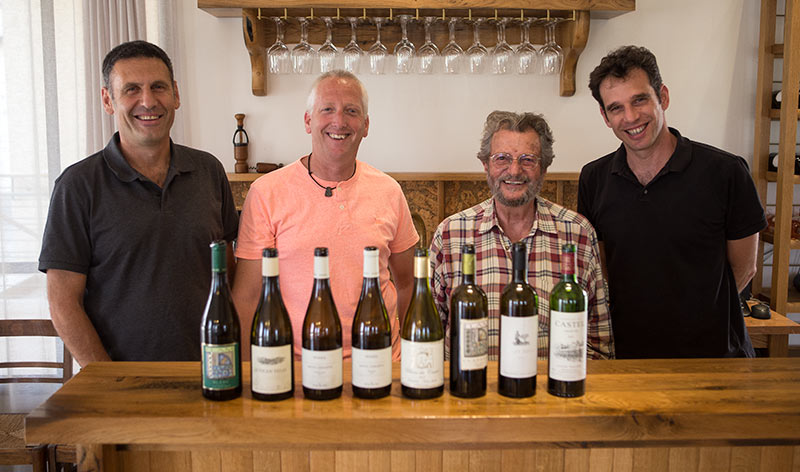
In starting, it’s important to note that definitive wine regions in Israel are something of an abstract idea, especially as there is an insane wealth of history behind them and their shifting borders over the centuries. Toss in to this the fact that a winery in one region can buy grapes from all over Israel and saying, “this winery is in X region” is something of a nebulous concept.
Despite this, it is indeed the physical Judean Hills region that seems to have the best development for touristic visits. Being located around Jerusalem and a relatively short drive from Tel Aviv (traffic willing) the cellars there are within easy reach of the majority of Israel’s population. Some 30 of them have even joined together to form a regional wine route. And then just to the north are even more cellars in Samson and Shomron.
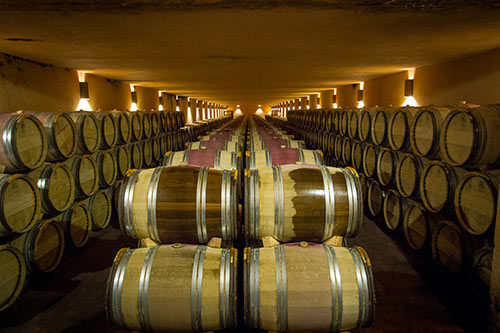
Domaine du Castel
One of the stalwarts that everyone in Israel seemed to know was Domaine du Castel. The patriarch of the family cellar, Eli Ben-Zaken planted their first vines in 1988 in the highest part of the Judean Hills, had their first vintage in 1992, and made the bold step of creating their first “Grand Vin” in 1995. They switched to fully Kosher production in 2003 and are currently producing some 100,000 bottles a year with 30-40% being exported abroad.
Their wines are quite popular locally and in general they’re of good quality. The Rosé was much like any Rosé found in Southern France and I was neither repulsed nor excited by it as Rosé is not something that I actively seek out. With a good degree of body, it would please those who enjoy this style of wine. It’s a similar case for the Blanc which is made from Chardonnay grapes. It completely mimics the California style of Chardonnay in that it has massive oak and toasted aromas. For those who enjoy this style, it would suit you well. For me, I thoroughly don’t enjoy it and happily left it behind when I moved from California. Admittedly my fellow travelers seemed to enjoy it more than I did which shows that while the quality is good, liking it is up to personal taste.
The reds get more interesting and the Petite Castel 2012 I found quite agreeable with dark cherry and clove notes to the nose and a fresh clean body that was well balanced and led in to a dry finish. While not a wine that would wow the Parkers of the world, for good, everyday drinking, it fits the bill. The Grand Vin 2011 starts to get more interesting. This wine needs considerable time to decant as initially the finish was quite closed and the fruit was very hidden in the body with tar and barrel notes taking over as they do in the nose. Just as we were leaving, I tasted it again and found that it was opening up rapidly. We also tasted the 2010 and 2009 vintages. The 2010 was immediately enjoyable with great balance and rounder fruit. The 2009 while smoothing out well I found it to have vanilla notes from the French oak that were still too pronounced.
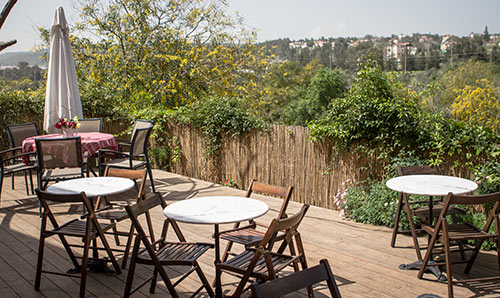
Flam
If there is a winery that people would equate with the “look” of those in the New World such as in Napa Valley or Stellenbosch, it is Flam. Very much a family affair and part of the new wave of “boutique” wineries in Israeli, they started in 1998. Brother, Golan Flam studied at UC Davis and then worked at a variety of cellars, with a long stint in Italy. He freely admits that it affected his approach to wine and you can easily see it with the Italian-leaning aspect to all of their wines and the fact that they pair exceedingly well with food as shown by the lovely lunch we had there during our visit. They’ve been under Kosher certification since 2010.
Their wines are overall very solid. The Blanc and Rosé were very food friendly with well balanced bodies and good acidity. The same goes for their reds. The Classico emulates a Chianti style well and the Syrah is nicely defined with some rustic notes to it from a small addition of Mourvèdre that I liked. The Merlot Reserve while good, I didn’t find as well-defined and the same goes for the Cabernet Sauvignon although that had a great freshness to that was a rarity in most wines during the trip. The Noble was the most elegant and well-defined of the bottles. With more than a nod to the wines of Montepulciano, I loved the dried dark fruits, white pepper, and rosemary in the nose. Wonderfully smooth and large in the mouth, it presents very well-balanced acidity that leads in to the finish. One of those wines to have by the glass or with a meal.
To sum up, you can’t really go wrong with any of the wines of Flam. Currently they’re maybe emulating Italian styles a bit much, but Golan seems like a very wine-curious fellow and it will be interesting to see if in future vintages this evolves to express the Israeli locale more while building upon his winemaking knowledge.
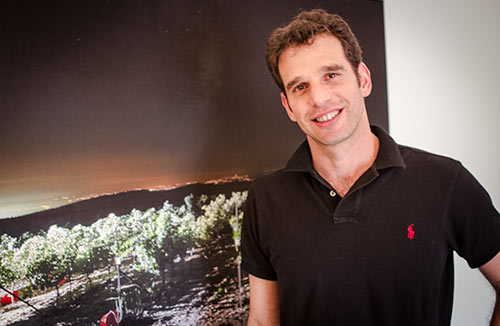
Tzora
So, here’s where things get interesting. If you wanted to know what the top wineries are in Israel, Tzora would be one of them. After traveling around for a week in the Israeli wine scene it seems that anyone worth their salt in the wine industry has touched Tzora at some point. But, the main man behind it was Ronnie James who took over running the winery from the Tzora kibbutz some 30 years ago. Ronnie focused on notching off every single thing you can do right to build up the quality of a winery. By focusing on the locale and doing things such as separate vineyard and varietal fermentation, it went a long way to making the place what it is today. This month marks six years since he passed away and absolutely everyone who knew him continues to talk about him with a forlorn melancholy in their voice showing how greatly he’s missed.
These days, it’s Eran Pick who is heading up the winemaking. He’s filled in well and brought along a wealth of New World experience and education with him including a degree from UC Davis along with a sommelier education via the WSET. There isn’t enough good to be said about the wines he’s making these days. While I found the Neve Ilan 2012 to be a pleasing, fresh Chardonnay with touches of dried apricot, chalk and kaffir lime, it was the Shoresh Blanc 2012 that really started to open things up. A Sauvignon Blanc, it has a very neutral aromatic arrangement with touches of honeysuckle and white blossoms. Fresh in the body, it’s just wonderfully alive through to the finish.
For the reds, we started with the Judean Hills 2012. At 95 shekels, it’s one of the best price quality wines to be found and has light, dried red fruits that lead in to a body that’s of equal intensity and some young cherry notes that hang in to the finish. The Shoresh Red 2012 was one of the few ones in Israel I found to have light toffee and reductive balsamic notes along with balanced herbal notes to the nose. It’s wonderfully smooth and velvety in the mouth with well-defined tannins leading in to a finish that’s has minor bitter tar notes. Solid overall and it lead in to the Misty Hills 2010 that blends 55% Cab with 45% Syrah. While it too had some balsamic notes, it was more dominated by its rich herbal notes of thyme and as well as a little cumin and freshness that evokes morning dew. Wonderfully balanced in the body with an elegant softness, it has a lingering finish with the smallest little hit of horseradish spiciness at the end of it.
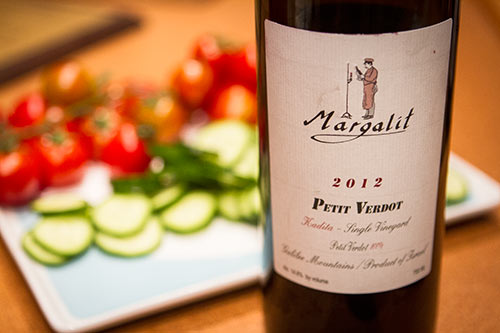
Margalit
If there is something of a Joe DiMaggio character in the Israeli wine scene, it’s probably Dr. Yair Margalit, the founder of Margalit winery. While he started the winery in 1989 with their first vintage released in 1991, he is held in great reverence by the winemakers for being such a pioneer in the industry, including being the first non-Kosher winery. Oh, there are also his books on the technology and chemistry of wine which, while perusing at their cellar reminded me of why I never pursued a scientific degree. But he’s much more than a scientist and is an intense winemaker who to this day still only produces 20,000 bottles a year in order to maintain strict control–a control so strict that we were told his apparently destroyed an entire vintage before it went on the market due to his thinking it wasn’t high enough quality (although later it was found that it was.)
Today, Yair’s son Assaf has taken on more of the day to day operations of the winery, although he’s been at his father side since he was a child. But they only have 3.8ha of vineyards which are completely dry farmed with no irrigation thus having what are quite low yields for the region and thus properly intense grapes.
Yair and Assaf took us through a lengthy journey of many of their bottles. My fellow travelers on this trip were very enamored of most everything and gave their wines some of the highest scores. Overall, if you like Bordeaux style wines but want an Israeli take on them, this is your winery. The Special Reserve 2010 was very nice with 85% Cab and 15% Dourif for a change of pace that made for a rich body with mild red fruit notes and well structured tannins in to a clean finish. The Cabernet Franc 2004 showed how well their wines can age and 10 years on it holds its fruit very well with everything balancing out well in the body, showing that Cabernet Franc is a grape that seems to have taken very well to Israel. The same goes for the Cabernet Sauvignon 2003 that held wonderful earthy and balsamic notes in the nose with a great, fresh mouth feel and acidity in great balance with the body.
But for me and probably much to the chagrin of the group after our visit there (because I kept bringing it up when people asked me what I thought of the wines), the wine that was the most interesting to me was the Petit Verdot 2012 (although I see that Richard did like it as well.) It marks a rather hefty departure from all of the other wines, but that bottle to me defined a new direction for the winery in their pioneering spirit as it expressed the locale better than anything else I tasted on the trip. Fresh and full in the body with light rose petal aromas in the nose, it was elegant and jubilant, but at the same time had a buttload of alcohol at 16%. Despite this, the wine was held in check. As to how it will age, only time will tell. Perhaps the alcohol will blow out the delicate fruit in the body. Perhaps not. The Margalit gang seems to know very well how what they’re doing and are an Israeli wine to seek out, although it might be tough given that they sell 90% of what they produce domestically.
So with that, time to head up north!
